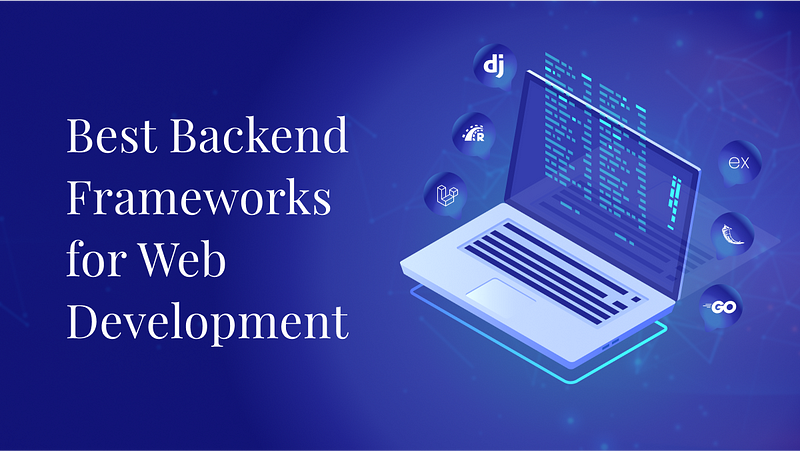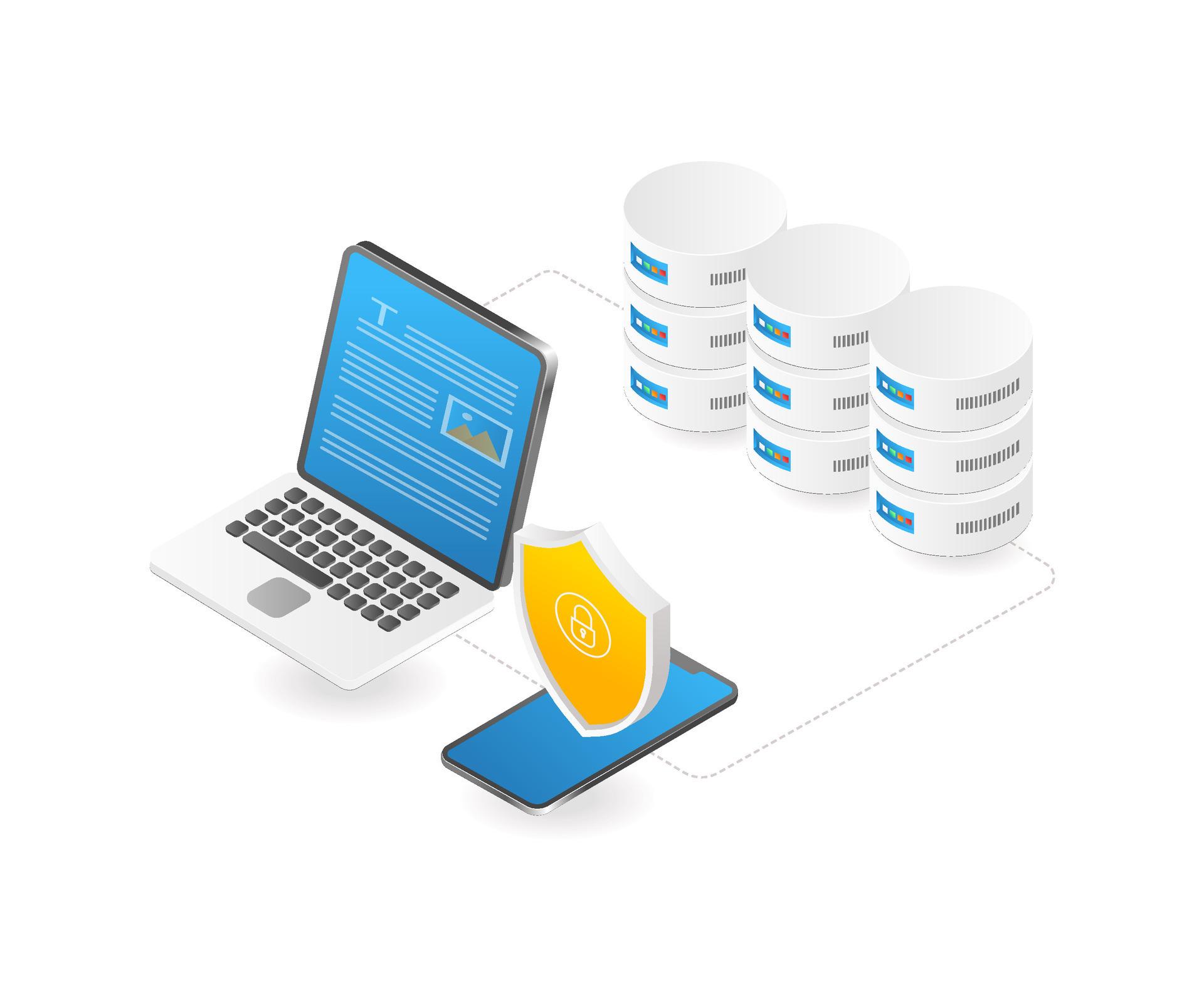Top 10 Backend Frameworks for Web App Development

What is backend framework?
Backend frameworks are pivotal in constructing a website's foundational structure, known as the server-side or backend. These frameworks encompass a suite of tools and modules critical in modern web development. Their impact on a web application's performance can significantly shape the success of a project. Backend frameworks primarily focus on simplifying and streamlining development tasks for programmers.
These frameworks cater to various scripting languages such as Ruby, JavaScript (Node.js), and compiled languages like Java, C#, among others. Their primary objective is to spare developers the need to create and set up everything from the ground up, thereby easing the initiation of development processes.
Why Use a Framework for the Backend?
Using a backend framework offers developers a streamlined approach to web application development, providing a host of benefits that enhance efficiency and maintainability. These frameworks come equipped with pre-built components, libraries, and tools, significantly expediting the development process. They enforce coding standards and best practices, promoting consistency and easing collaboration among developers.
By automating repetitive tasks and offering reusable modules, frameworks boost productivity, allowing developers to focus on implementing application-specific features. Security measures embedded within these frameworks help mitigate common web vulnerabilities, while their scalable architecture accommodates application growth and increased traffic. Moreover, the extensive community support, comprehensive documentation, and integrated testing and debugging tools further augment the appeal of using backend frameworks, ensuring the creation of robust, standards-compliant, and secure web applications.
Top 10 Backend Frameworks for Web App Development
Ruby on Rails
This framework uses Ruby and emphasizes convention over configuration. It enables developers to build web applications rapidly with its built-in tools and follows the MVC (Model-View-Controller) pattern.
- Convention over Configuration: Follows a principle that reduces the need for configuration, speeding up development.
- MVC Architecture: Built-in support for the Model-View-Controller pattern for organizing code.
- Developer Productivity: Comes with many built-in tools, reducing the time required for routine tasks.
Django
A high-level Python framework is known for its rapid development and scalability. Django follows the principle of "batteries included," offering a comprehensive set of features for building robust web applications, including ORM (Object-Relational Mapping) for database interaction.
- Rapid Development: Offers a vast ecosystem with ready-to-use components, including an ORM for database interactions, authentication, and templating.
- Scalability: Provides scalability options for handling large-scale applications efficiently.
- Security: Built-in security features and tools to help developers build secure web applications.
- Versatility: Suitable for a variety of projects, from small to complex, due to its modularity.
FastAPI
A modern Python web framework specifically designed for building APIs quickly. It offers high performance and automatic generation of interactive API documentation, making API development more straightforward.
- High Performance: Known for its high performance, making it suitable for building APIs quickly.
- Automatic API Documentation: Generates interactive API documentation automatically.
- Pythonic: Utilizes Python's type hints and async support for better code readability and maintainability.
Express.js
This minimalist and flexible Node.js framework is highly popular for building web applications and APIs. It provides a straightforward approach to handling HTTP requests, routing, and middleware functionalities.
- Flexibility: Lightweight and flexible framework for Node.js, allowing developers to build custom solutions.
- Middleware: Offers a robust middleware system to handle HTTP requests efficiently.
- Community and Ecosystem: Large community support and a vast ecosystem of middleware packages for extending functionalities.
ASP.NET
Developed by Microsoft, ASP.NET is based on the .NET framework and supports multiple languages like C#. It offers a wide range of tools, libraries, and patterns for building scalable and secure web applications.
- Language Versatility: Supports various languages like C#, F#, and Visual Basic.
- Robust Framework: Offers a robust set of libraries, tools, and patterns for building scalable and secure web applications.
- Integration with Microsoft Ecosystem: Seamlessly integrates with other Microsoft technologies, enhancing productivity for Windows-based applications.
Spring Boot
Built on the Java platform, Spring Boot simplifies the development of production-ready applications by reducing configuration overhead and providing a robust ecosystem of libraries and tools.
- Simplified Configuration: Reduces the configuration overhead required in traditional Spring applications.
- Modularity: Provides a modular approach, allowing developers to select specific components as needed.
- Enterprise-Grade Development: Offers comprehensive support for enterprise-level applications and services.
Laravel
A PHP framework that follows the MVC pattern and offers an elegant syntax. Laravel simplifies common tasks like authentication, routing, and caching and supports rapid development with its expressive coding style.
- Expressive Syntax: Provides a clean and expressive syntax for ease of development.
- Eloquent ORM: Offers an easy-to-use and powerful ORM for database interactions.
- Rich Ecosystem: Provides a vast ecosystem of packages (Laravel ecosystem) for extending functionalities.
Koa.js
Developed by the creators of Express.js, Koa.js is a lightweight Node.js framework known for its modularity and focus on asynchronous programming, providing a more expressive and robust approach to middleware.
- Modularity: Known for its modularity and minimalistic approach, allowing developers to have more control over the middleware.
- Asynchronous Capabilities: Focuses on asynchronous programming, which can enhance performance in specific use cases.
- Newer Features: Known for integrating newer features and updates, providing modern solutions for web development.
Flask
Known as a lightweight and flexible Python framework, Flask is well-suited for building small to medium-sized applications. It provides essential features while allowing developers the freedom to choose additional libraries for extended functionalities.
- Simplicity: Known for its simplicity, allowing developers to start quickly and build lightweight applications.
- Flexibility: Offers flexibility in choosing libraries and components as per project requirements.
- Scalability for Small Projects: Ideal for small to medium-sized projects due to its lightweight nature.
Phoenix
Built on the Elixir programming language, Phoenix leverages the power of the Erlang VM for high performance and fault-tolerant applications. It excels in handling real-time features and concurrency.
- Performance: Leverages the Erlang VM for high performance, especially in real-time applications.
- Concurrency: Built for handling concurrent connections and providing fault-tolerant systems.
- Scalability: Scales efficiently for handling large amounts of traffic.
Conclusion
In the dynamic realm of web application development, choosing the right backend framework is a critical decision that significantly influences the success and efficiency of a project. Throughout this exploration of the top 10 backend frameworks, we've uncovered an array of powerful tools, each offering distinct advantages tailored to diverse project needs and developer preferences.


